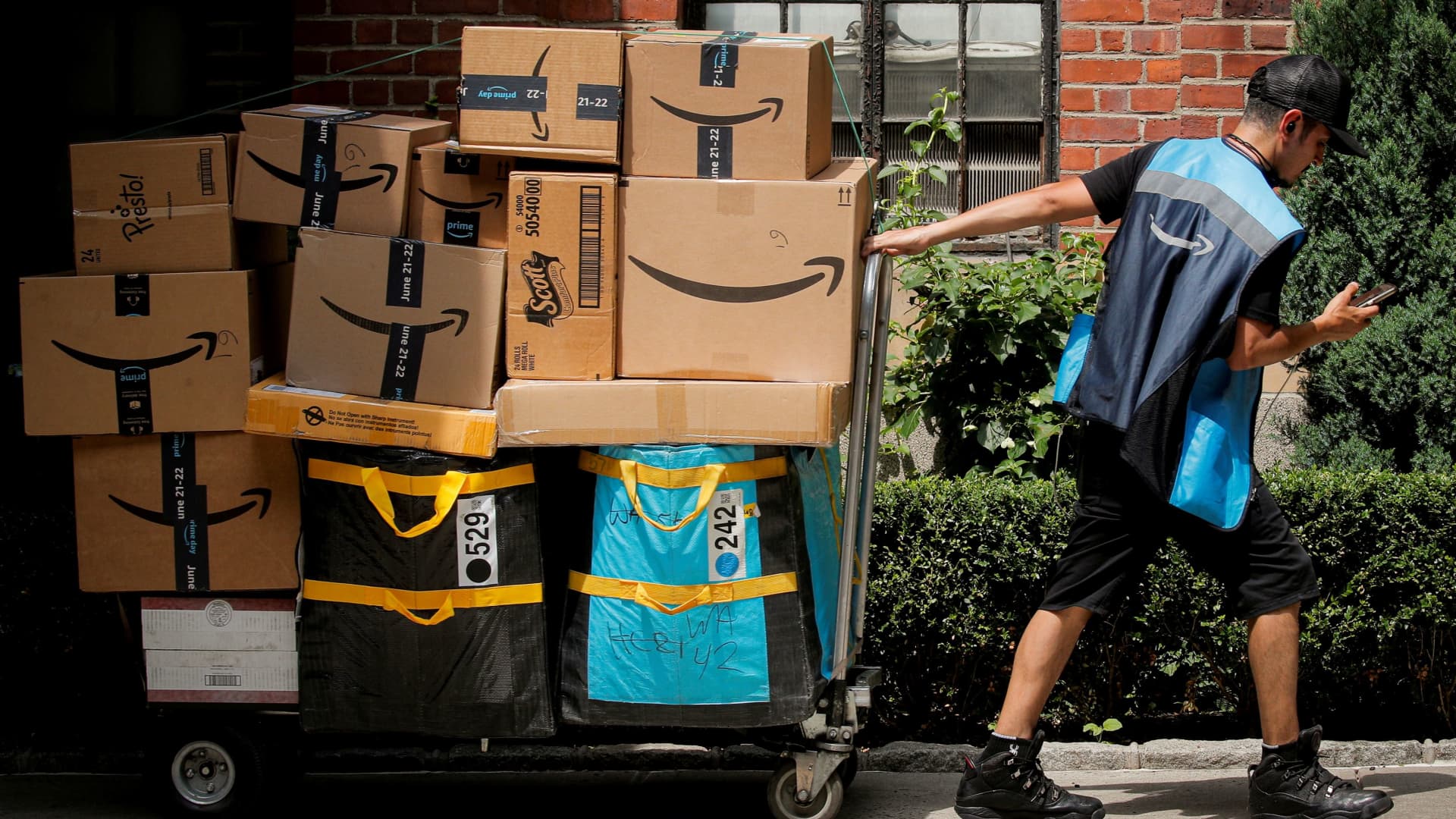Earlier this week, Walmart and Best Buy both lowered their profit outlook for the second quarter and full year, setting off alarm bells across the retail sector that soaring inflation was impacting consumer spending.
Shares of other retailers including Amazon, Target and Macy’s all fell following Walmart’s announcement on fears they’d see similar headwinds.
But Amazon executives suggested Thursday that the e-commerce giant hasn’t seen the kinds of inflationary impacts that are hurting other retailers. On a press call discussing Amazon’s second-quarter results, CFO Brian Olsavsky was asked whether inflation had changed how consumers are spending their money.
“We have not seen anything yet,” Olsavsky said. “We saw demand increase during the quarter and we had a very strong June.”
Amazon made progress on bringing products back in stock and delivery speeds are largely back to normal, Olsavsky said, after a period where its fulfillment and logistics operations were stressed by a pandemic-driven flurry of online orders. He suggested that consumers noticed the improvement, and in turn, bought more stuff during the quarter.
Inflation-weary consumers showed no signs of curtailing spending, but that still wasn’t enough to restore growth in Amazon’s e-commerce business. Online sales declined 4% year over year, as many shoppers have returned to physical stores, leading to a broader slowdown in e-commerce activity from pandemic highs.
Amazon gave an optimistic view of the months ahead. For the current quarter, Amazon said it expects sales to come in between $125 billion and $130 billion, representing growth of 13% to 17%. Analysts forecast sales of $126.4 billion, according to Refinitiv. That, along with revenue that beat expectations, sent the stock up more than 13% after hours.
Amazon has a particular advantage of its rival Walmart.
On Monday, the big-box retailer said the rising cost of groceries and gas forced consumers to tighten their belts, causing them to spend more on necessities like food and less on areas like electronics and apparel. That meant higher ticket items started to pile up on shelves. In turn, Walmart aggressively discounted unwanted items, which hurt its profit margins.
Amazon is bolstered by a greater mix of middle and upper income consumers, whereas Walmart is “heavily driven” by the lower income consumers, which are more sensitive to inflation, said Andrew Lipsman, principal analyst at eMarketer.
“I think Walmart at this moment in time has a much, much tighter spread and is going to be more susceptible to these impacts of inflation,” Lipsman said in an interview.
Tom Forte, an analyst at D.A. Davidson, agreed. “The core consumer at Amazon is more well off than the consumer at Walmart, and that seems to be enabling it to outperform Walmart,” said Forte, who has a buy rating on Amazon shares.
Amazon also has a built-in consumer base of more than 200 million members that is primed to buy more. Members of Amazon’s Prime discount club tend to spend more and order more frequently than non-Prime members, according to market research firm Consumer Intelligence Research Partners.
So far, Amazon said Prime members don’t appear to be ditching their memberships to cut costs in the face of inflation.
“We continue to be pleased with the membership levels and retention in our Prime program,” Olsavsky said. “It was as good or better than we had expected.”
